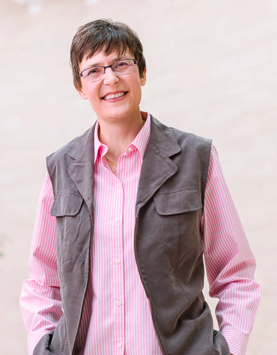by Buck Institute
April 20, 2023 . BLOG
Buck researchers love mass spectrometry!
There is a machine used by scientists that is a darling of research due to the seemingly infinite number of mysteries it can solve: the mass spectrometer. At its root, the machine determines the mass of the sample, but that simplicity belies the number of applications the technology has across diverse fields, from basic chemistry and physics to clinical research and drug testing.
The Buck Institute’s Mass Spectrometry Center has 6 of these workhorses, each with its own strengths in speed, sensitivity or unique abilities to separate components of a sample.
 Using the variety of machinery in her facility, the center’s director, Professor Birgit Schilling, PhD, collaborates with colleagues throughout the Buck and worldwide on a range of projects, creating novel methods to study age-related diseases and conditions that can affect aging.
Using the variety of machinery in her facility, the center’s director, Professor Birgit Schilling, PhD, collaborates with colleagues throughout the Buck and worldwide on a range of projects, creating novel methods to study age-related diseases and conditions that can affect aging.
The list of what mass spectrometers can’t do almost seems to be shorter than what they can do. Schilling rattles off a list of scientific specialties that utilize mass spectrometry, which includes drug discovery and metabolism, metabolomics, proteomics, forensics, pharmacology and structural biology. Her own projects span many of these fields, exploring aging and complex protein interactions to address kidney disease, ovarian and breast cancers, and aging cartilage in the knee, to name a few.
Amazing Technology Emerging
The magic of mass spectrometers lies in a characteristic of molecules: that they can hold positive or negative electric charges. A hint that this quality might be useful for researchers came in 1898, when physicist Wilhelm Wein realized that a magnet could alter the pathway of a stream of charged particles.
Building upon that finding, J.J. Thomson, a scientist best known for discovering the existence of electrons, built the first mass spectrometer in 1912. To this day, this same concept of moving charged particles to sort them is the basis of how the machines rapidly calculate the exact molecular weight of hundreds or thousands of molecules in a sample.
The very simplified explanation of how scientists go from sample to readout, says Schilling, is that a mass spectrometer converts individual molecules to ions that can be moved by external magnetic fields. A magnet then separates the ions by their mass and charge, the separated ions are measured, and the results displayed on a chart, which not only indicate the molecular weights but also the relative amounts of each molecule.
Applications to Biology
Over the years, scientists have built upon the basic concepts of measuring mass over charge; many iterations later have yielded the modern machinery of today, which can scan thousands of separate molecules in minutes or a few hours. As the technology evolved, so did the ways in which researchers use the machines. Originally mass spectrometers were utilized by physicists and chemists, but now biologists have embraced the technology and it has become an essential tool for exploring proteins in the cell.
“Because of the improvement in these exquisite machines’ speed and sensitivity, we now have the ability to study proteomics, which is the study of all of the functions and structures of proteins,” says Schilling.
At the Buck, Schilling directs the Mass Spectrometry Center, which includes a Proteomics Core exploring protein signaling, modifications of proteins within cells, how proteins are metabolized and how drugs interact with proteins. Additionally, the Center also houses a Metabolomics Core facility, which aims to uncover how the molecules that affect metabolism function and interact to affect aging.
Schilling embraces all new directions of research exploration and is actively involved in innovating the future of the technology. She collaborates with the instrument manufacturers to continuously improve the ways in which mass spectrometers can be used to ask biological questions.
“We are constantly looking for more questions that can be answered with the power of mass spectrometry,” she says. “I am so proud of our beautiful instruments and what they do for us.”

SHARE